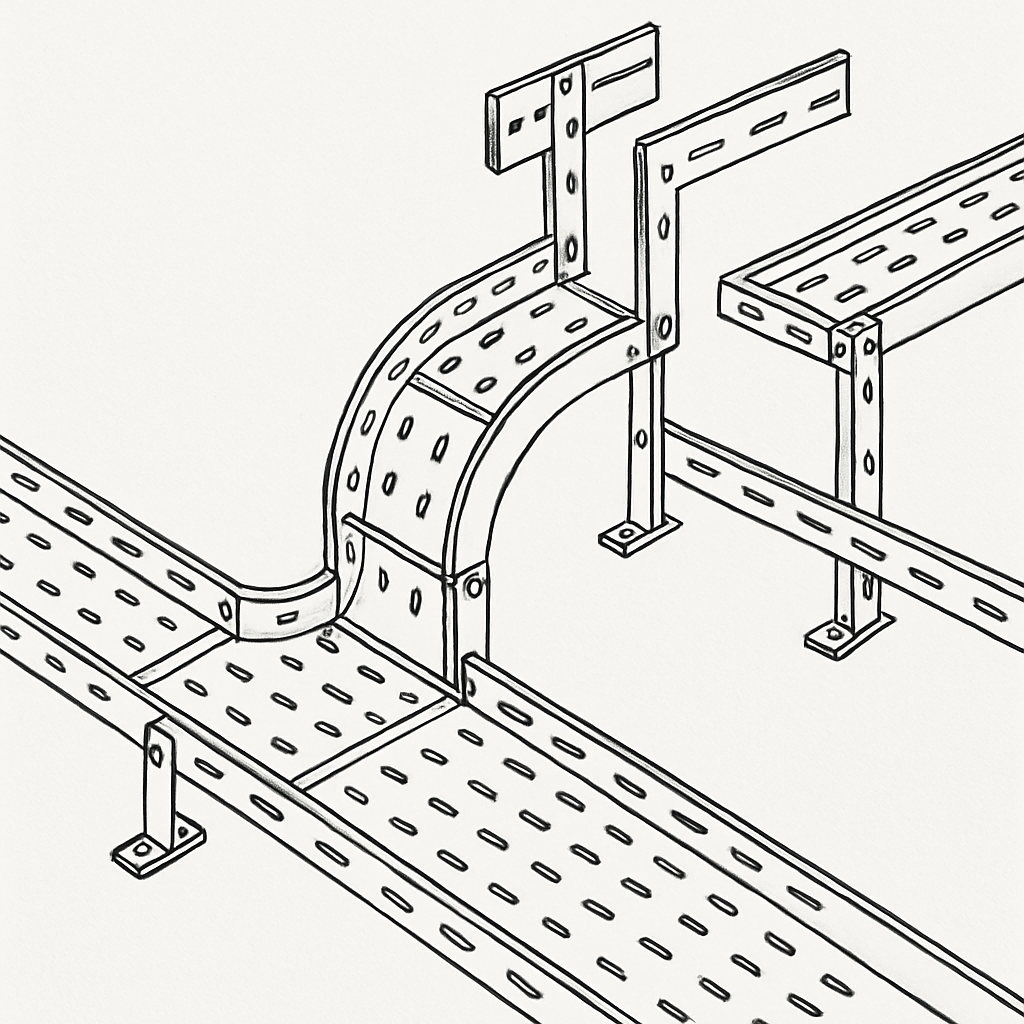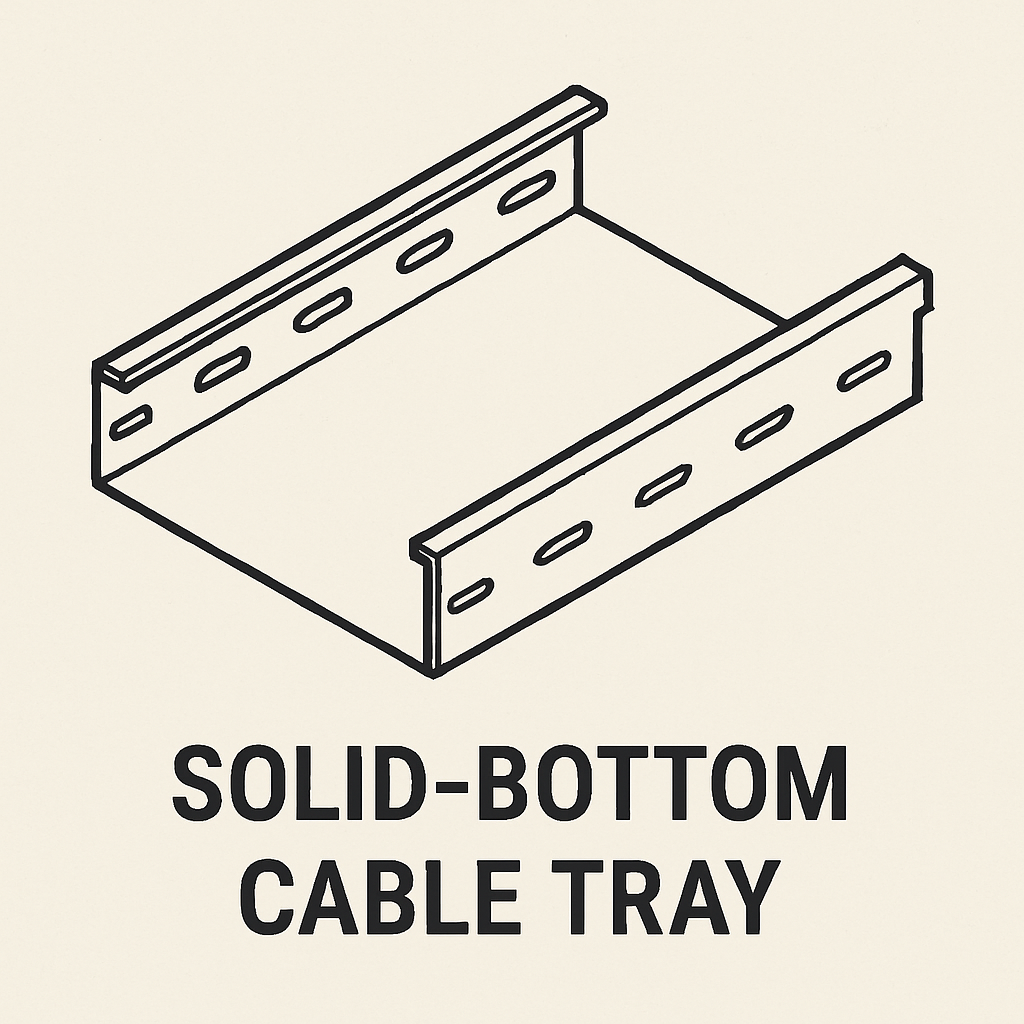In the world of electrical installations, cable trays play a crucial role in supporting and protecting the array of cables we depend on daily. Their importance cannot be overstated, whether in industrial settings, commercial buildings, or residential projects. But what is a cable tray, and how does it function within a cable tray system?
What is a Cable Tray?
A cable tray is a structural component used to support insulated electrical cables. They provide a rigid framework that holds the cables safely off the ground, reducing the risk of damage and ensuring organized routing. Cable trays are essential for maintaining a neat and efficient electrical installation, allowing for easy maintenance and the accommodation of future expansions.
What is Tray Cable Used For?
Tray cables are specifically designed to be installed in cable trays. These cables are constructed to withstand various environmental conditions and are often used in industrial settings where durability and reliability are paramount. The flexibility of tray cables makes them ideal for applications that require frequent adjustments or maintenance.
Types of Cable Trays
Cable trays come in several types, each designed to meet specific needs and conditions. Understanding the different cable tray types can help you choose the right one for your project.
Ladder Cable Trays
Ladder cable trays are the most common type. They consist of two side rails connected by cross members or rungs. This design allows for maximum ventilation and prevents moisture accumulation, making it ideal for high-heat environments.
Solid Bottom Cable Trays
Solid bottom cable trays have a flat surface without perforations. They offer excellent protection for sensitive cables from electromagnetic interference and physical damage. However, they provide less ventilation compared to ladder trays.
Trough Cable Trays
Trough cable trays combine the features of ladder and solid bottom trays. They have side rails like ladder trays, but with a solid bottom that includes some perforations. This design offers a balance between protection and ventilation.
Channel Cable Trays
Channel cable trays are used for installations with limited space or when a small number of cables need routing. They are lightweight and easy to install, but have limited capacity compared to other types.
Wire Mesh Cable Trays
Wire mesh cable trays, also known as basket trays, are made from a wire mesh structure. They are lightweight and offer excellent ventilation, making them ideal for light-duty applications and environments where quick installation is necessary.
Cable Tray Systems and Installation
A cable tray system involves the integration of various cable trays and supporting structures to form a comprehensive network for cable management. The system ensures a systematic approach to organizing and protecting cables.
Cable Tray Installation
Proper cable tray installation is critical to ensure safety and functionality. Here are key steps and considerations:
- Planning and Design: Assess the project requirements, including the number of cables, their types, and the environmental conditions. Design the layout to optimize space and functionality.
- Selection of Cable Trays: Choose the appropriate cable tray types based on the design and environmental factors. Consider load capacity, material, and installation environment.
- Mounting and Support: Secure the cable trays to walls, ceilings, or other structures using brackets, hangers, or other supports. Ensure that the supports are spaced appropriately to prevent sagging or overloading.
- Cable Placement: Lay the cables within the trays, ensuring they are not overcrowded. Allow for some slack to accommodate expansion or maintenance.
- Grounding and Bonding: Implement proper grounding and bonding to ensure electrical safety and compliance with standards.
- Inspection and Testing: Conduct regular inspections and testing to ensure the integrity and safety of the cable tray system.
Cable Tray Sizes and Materials
Cable trays come in various sizes to accommodate different applications. The size of a cable tray is determined by its width, depth, and length, which should be selected based on the volume of cables and the installation environment.
Common Materials for Cable Trays
- Steel: Offers strength and durability, suitable for heavy-duty applications.
- Aluminum: Lightweight and corrosion-resistant, ideal for outdoor or corrosive environments.
- Fiberglass: Non-conductive and resistant to chemicals, suitable for industrial settings.
Advantages of Using Cable Trays
Cable trays offer several advantages in electrical installations:
- Organization: They keep cables organized and accessible, reducing clutter and simplifying maintenance.
- Protection: They protect cables from environmental damage and mechanical stress.
- Flexibility: Cable trays can be easily modified or expanded to accommodate changes in the system.
- Cost-effectiveness: Reduce the need for extensive conduit systems, lowering installation and maintenance costs.
Conclusion
Understanding cable trays and their applications is essential for anyone involved in electrical installations. By selecting the right type and size of cable tray, you can ensure a safe, efficient, and organized system that meets the demands of modern infrastructure.
In conclusion, whether you’re dealing with industrial, commercial, or residential projects, cable trays provide a reliable solution for cable management. With careful planning and installation, these systems can significantly enhance the safety and efficiency of your electrical infrastructure.


